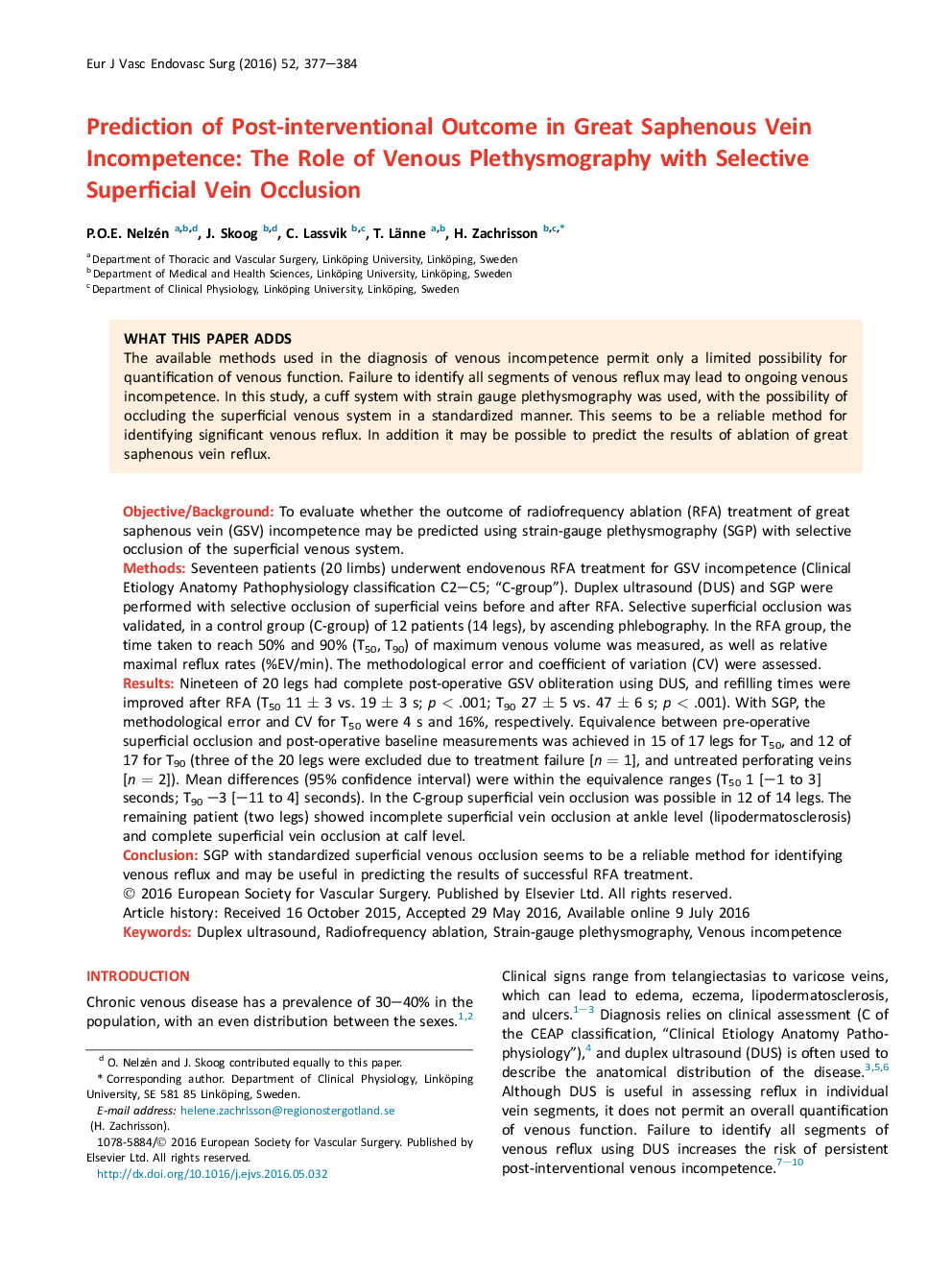| Article ID | Journal | Published Year | Pages | File Type |
|---|---|---|---|---|
| 2911560 | European Journal of Vascular and Endovascular Surgery | 2016 | 8 Pages |
Objective/BackgroundTo evaluate whether the outcome of radiofrequency ablation (RFA) treatment of great saphenous vein (GSV) incompetence may be predicted using strain-gauge plethysmography (SGP) with selective occlusion of the superficial venous system.MethodsSeventeen patients (20 limbs) underwent endovenous RFA treatment for GSV incompetence (Clinical Etiology Anatomy Pathophysiology classification C2–C5; “C-group”). Duplex ultrasound (DUS) and SGP were performed with selective occlusion of superficial veins before and after RFA. Selective superficial occlusion was validated, in a control group (C-group) of 12 patients (14 legs), by ascending phlebography. In the RFA group, the time taken to reach 50% and 90% (T50, T90) of maximum venous volume was measured, as well as relative maximal reflux rates (%EV/min). The methodological error and coefficient of variation (CV) were assessed.ResultsNineteen of 20 legs had complete post-operative GSV obliteration using DUS, and refilling times were improved after RFA (T50 11 ± 3 vs. 19 ± 3 s; p < .001; T90 27 ± 5 vs. 47 ± 6 s; p < .001). With SGP, the methodological error and CV for T50 were 4 s and 16%, respectively. Equivalence between pre-operative superficial occlusion and post-operative baseline measurements was achieved in 15 of 17 legs for T50, and 12 of 17 for T90 (three of the 20 legs were excluded due to treatment failure [n = 1], and untreated perforating veins [n = 2]). Mean differences (95% confidence interval) were within the equivalence ranges (T50 1 [–1 to 3] seconds; T90 –3 [–11 to 4] seconds). In the C-group superficial vein occlusion was possible in 12 of 14 legs. The remaining patient (two legs) showed incomplete superficial vein occlusion at ankle level (lipodermatosclerosis) and complete superficial vein occlusion at calf level.ConclusionSGP with standardized superficial venous occlusion seems to be a reliable method for identifying venous reflux and may be useful in predicting the results of successful RFA treatment.
